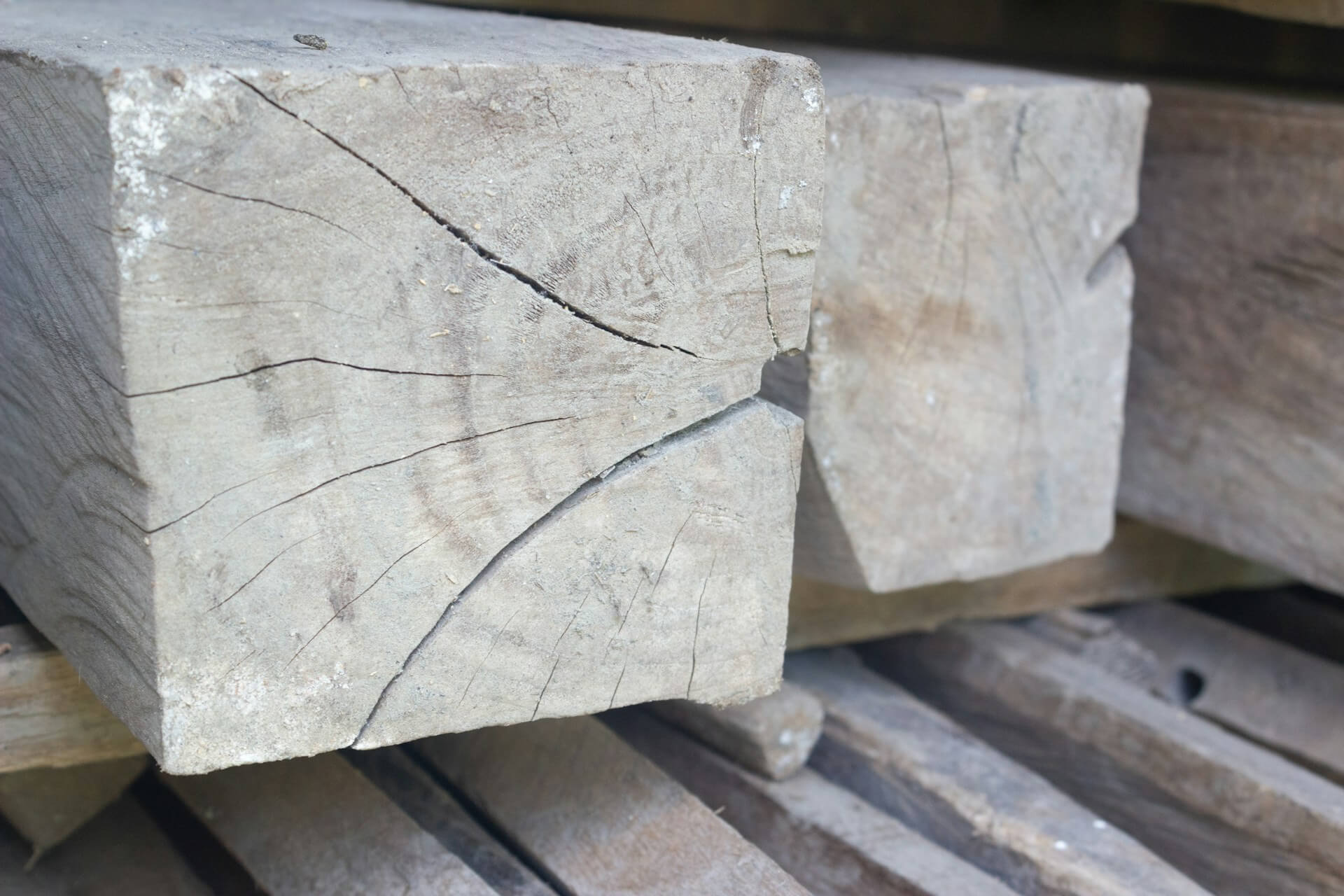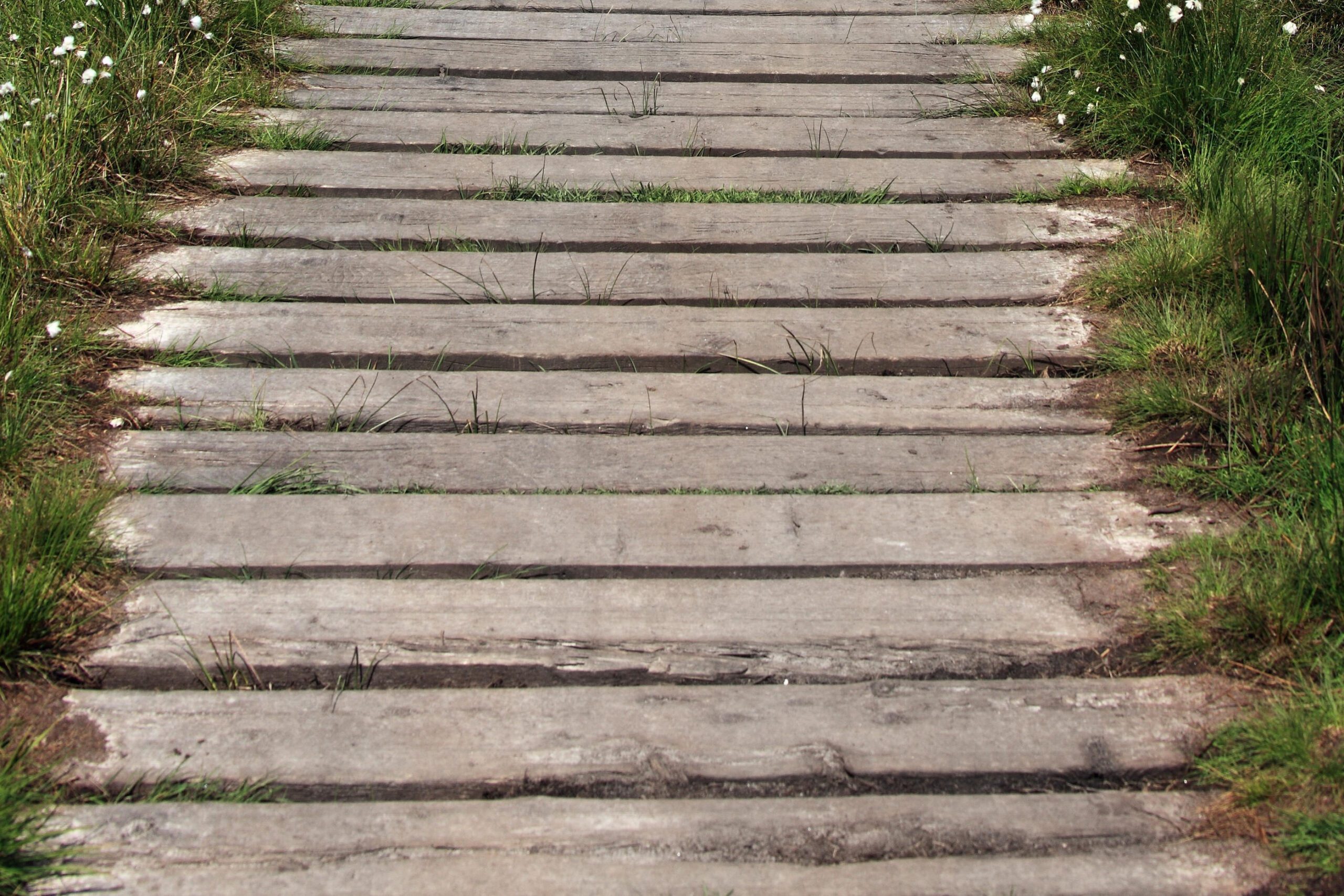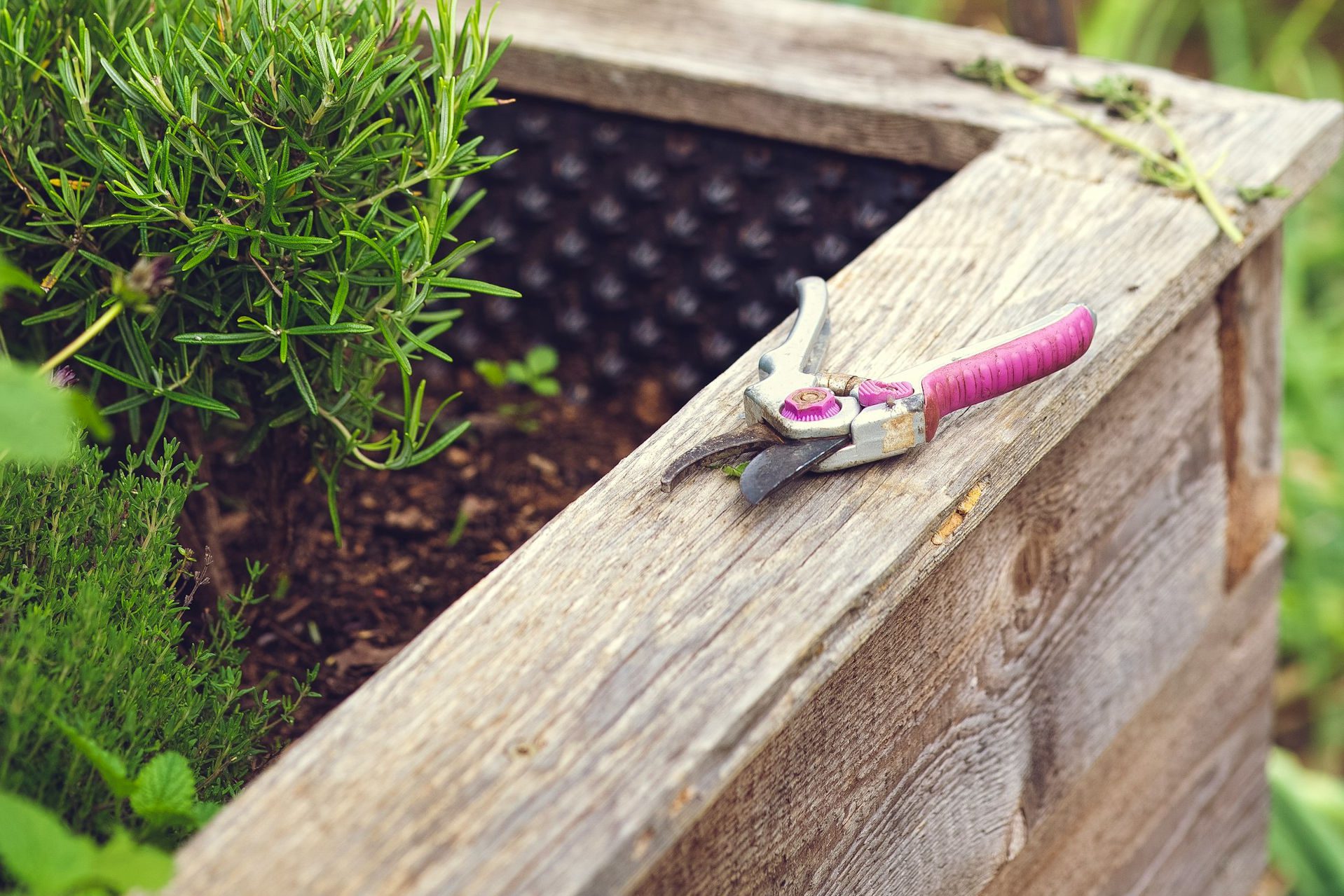
Small Garden Ideas with Railway Sleepers
Small gardens in the UK offer unique opportunities for creative design, especially when using railway sleepers. These versatile timber blocks, once used for supporting railway tracks, have become a staple in modern garden landscaping. Whether you’re looking to build raised beds, create garden edging, or add rustic charm to your outdoor space, garden railway sleepers provide endless possibilities for transforming outdoor spaces, even when you have only a modest garden.
Why choose railway sleepers for small gardens?
Wooden sleepers offer a blend of durability, rustic feel, and creative design potential. Here’s why they’re perfect for compact gardens:
- Versatility: Sleepers provide structure for retaining walls, and garden edging.
- Aesthetic Appeal: Their natural wood grain and weathered look add rustic charm and visual appeal.
- Durability: High quality timber sleepers, especially hardwood sleepers, withstand harsh weather conditions and last for years.
- Cost-Effective: Using reclaimed sleepers or treated softwood sleepers can be budget-friendly for various garden projects.
- Eco-Friendly: Reclaimed railway sleepers and sustainable timber options support eco-friendly garden design.
Planning your small garden with sleepers
Before starting your landscaping project, take a close look at your garden space and consider how railway sleepers can help you achieve your goals. Observe how sunlight moves across your garden, as this will influence where you place raised beds, sleeper walls, or seating areas. Think about the natural slope, existing features, and how you want to use each area—whether for a vegetable patch, a quiet seating spot, or a pathway. By understanding your garden’s unique characteristics, you can make the most of what sleepers provide in both structure and visual appeal.
Tips for planning
| Planning aspect | Description |
|---|---|
| Maximise space | Use straight lines or curved designs to define zones and create the illusion of a larger garden. |
| Vertical elements | Incorporate sleeper walls or raised beds to add height and interest. |
| Drainage | Ensure sufficient drainage by laying a gravel base or shallow trench beneath sleepers, especially for raised beds and retaining walls. Use a weed membrane under gravel to prevent weed growth while allowing water drainage. |
| Garden organisation | Use sleepers to separate garden zones, link different levels, or create privacy walls. |

Creative small garden ideas using railway sleepers
Railway sleepers offer endless possibilities for transforming even the smallest garden. Their sturdy structure and natural look make them perfect for creating raised beds, wooden planters, and other features that maximise space, improve organisation, and add rustic charm to your outdoor area.
1. Raised beds and wooden planters
Raised beds are a classic use for garden sleepers. They’re ideal for growing vegetables, herbs, or flowers, and make gardening accessible in small spaces.
How to build:
- Lay a shallow trench and add a weed suppressant layer.
- Position your sleepers
- Secure corners with threaded bars or galvanised pins which we hold a selection of in stock at all times.
- Fill with a mix of topsoil and compost for healthy planting beds. If using softwood sleepers, apply our end coat preservatice to any cuts or drilled holes.
Benefits:
- Prevent weeds and improve soil health.
- Optimise garden space and allow for crop rotation.
- Visually appealing and easy to maintain.
2. Sleeper pathways and garden edging
Sleeper pathways are a practical and attractive way to guide movement throughout your garden, helping to connect different zones and create a sense of flow. By combining railway sleepers with garden gravel or stepping stones, you can achieve a rustic feel that complements both traditional and modern garden designs. These pathways not only make your outdoor space more accessible but also add a unique visual element that stands out in any garden layout.
Tips:
- Use treated sleepers for outdoor use and longevity.
- Lay sleepers in straight lines or curved designs to suit your garden layout.
- Lay on a compacted MOT Type 1 or gravel sub-base. For added stability, use timber pegs or haunching where needed.
Garden edging with timber sleepers helps define flower beds, prevent weeds, and add a professional finish to your landscaping project.
3. Retaining walls and sloped gardens
In gardens with uneven terrain or noticeable slopes, sleeper walls provide an effective solution for creating terraced levels and retaining walls. These structures not only stabilise the ground and prevent soil erosion but also open up new possibilities for planting beds and decorative features. By using railway sleepers, you can build strong, long-lasting retaining walls that blend naturally with the rest of your garden, adding both function and aesthetic appeal.
How to build:
- Use hardwood railway sleepers for strength and long life.
- Ensure good quality drainage behind the wall to prevent moisture damage.
- Backfill with coarse gravel and include a perforated land drain where needed to avoid water pressure behind the wall.
4. Garden furniture and seating areas
Railway sleepers are ideal for crafting robust and stylish garden furniture that stands up to outdoor use. Their solid structure brings a rustic feel and ensures your seating areas stay comfortable, practical, and visually appealing for years. With a bit of creativity, sleepers can be used to design unique benches, tables, or lounges that fit perfectly into your garden layout.
Ideas:
- Create curved seating with railway sleepers for a communal feel.
- Combine with wooden landscaping poles or decking for a cohesive look.
- Use a suitable wood preservative or wood oil finish to protect against the elements.
5. Vertical features and water elements
Adding vertical features and water elements with railway sleepers gives your small garden extra character and dimension. Sleepers work well for building pergolas, archways, and can also be used to form raised ponds or decorative borders. These elements not only maximise your garden’s potential but also enhance its natural beauty and create a welcoming atmosphere.
Tip: If using sleepers to edge ponds, ensure the timber is non-toxic and free from creosote, especially around fish or wildlife, most popular type of sleeper for water elements are the oak sleepers.

Choosing the right sleepers for your project
Selecting the most suitable type of timber is essential for the long-term success of any garden makeover. Your choice will influence not only the overall look of your outdoor space but also the durability and maintenance requirements of your landscaping features. Consider the style you want to achieve, how you plan to use each element, and the unique needs of your garden before making a final decision.
Types of sleepers
#1 Treated Softwood Sleepers (Best value & most versatile)
These are the most cost-effective and versatile sleepers we stock. Treated softwood sleepers are lightweight, easy to cut, and available in a wide range of sizes from 1.2m up to 3.6m, making them ideal for everything from raised beds to edging, steps, and furniture. Their uniform size and straight edges make installation simple.
#2 Reclaimed Railway Sleepers (Rustic character with a story)
Reclaimed sleepers are full of rustic charm and character, with natural variations in colour and shape that make them perfect for traditional or wildlife-style gardens. However, due to historic creosote treatment, they’re not suitable for use in play areas, flower beds, or vegetable gardens. These sleepers may also vary in length and size.
#3 Oak Sleepers – Hardwood (Strong, long-lasting, and great looking)
Oak sleepers are our best-selling hardwood option, dense, heavy, and built to last. Their natural resistance to decay makes them ideal for retaining walls, steps, and high-wear areas. Oak brings a timeless, high-quality look to any garden and weathers beautifully over time.
TIP: Buy in Bulk and Save
If you’re working on a larger garden project, ask about bulk sleeper discounts. Buying full packs instead of individual sleepers offers better value and ensures a consistent match in size and appearance across your project.
When choosing between new and reclaimed sleepers, also consider the environmental impact and the overall aesthetic you wish to achieve. Both options can be incorporated into a variety of garden styles, from minimalist to rustic.
Treated vs. Untreated
When it comes to outdoor landscaping, it’s important to choose the right type of sleeper for your project. Treated softwood sleepers are ideal for general garden use, they’re affordable, easy to work with, and designed to resist moisture and decay.
For areas with direct contact to soil, children, or pets: such as vegetable beds or play spaces, we recommend checking the safety of the timber treatment used. In these cases, naturally durable hardwood sleepers, like oak, are a reliable alternative, offering strength and rot resistance without chemical treatments.
Installation and maintenance tips
Proper planning and regular attention are key to ensuring your wooden features remain both practical and attractive in your outdoor setting. Taking care during construction and following a consistent maintenance routine will help preserve the quality and appearance of your garden elements for years to come.
Installation
Proper installation of railway sleepers is essential for creating stable and long-lasting garden features. Taking care at this stage will help prevent future issues and ensure your structures remain safe and attractive.
- Cutting and drilling: Use appropriate tools for cutting and drilling sleepers, especially hardwood.
- Fastening: Secure sleepers together with screws, nails, sleeper pins or steel rods for a sturdy structure.
- Drainage: Always ensure sufficient drainage with a gravel base or landscaping fabric beneath sleepers.
Maintenance
Ongoing maintenance keeps your railway sleeper features looking their best and performing well over time. Regular checks and care will help you spot and address any problems early. Over time, treated softwood sleepers can be painted or stained if you’d like to refresh their appearance or match your garden’s design. Wait a few months after installation before painting to allow the timber to dry out properly.Use a breathable, exterior-grade wood paint or stain, and always clean the surface before applying for best results.
- Annual care: Reapply wood preserver or oil finish each year to maintain appearance and resist rot.
- Check for damage: Inspect for signs of timber rot, insect attack, or algae growth, especially in damp areas.
- Cleaning: Clean sleeper pathways and seating areas regularly to prevent slipping and maintain visual appeal.

Real-life inspiration: Small UK gardens transformed
Across the UK, homeowners are using creative sleeper ideas to completely change the look and function of their gardens. Each project shows how thoughtful design and the right materials can maximise limited space, add character, and make outdoor areas more enjoyable all year round.
Example 1: Modern courtyard with raised beds
A London homeowner used new railway sleepers to create raised beds and a timber deck path. The result is a visually appealing, low-maintenance garden with enough space for entertaining and growing herbs.
Example 2: Rustic wildlife-friendly retreat
In a cottage in Oxfordshire, reclaimed sleepers form curved seating, sleeper pathways, and natural retaining walls. Flower beds overflow with native plants, and a sleeper pond attracts birds and insects.
Example 3: Sloped garden tiering
A sloped garden in Henley on Thames was transformed using hardwood railway sleepers for terracing. The design links garden levels, introduces new growing areas, and incorporates steps with anti-slip timber edging.
Frequently Asked Questions
Can you lay sleepers directly on soil?
It’s possible, but not recommended. Sleepers laid directly on soil are more prone to rot. For best results, place them on a compacted gravel or sand base to improve drainage and longevity.
What to do with railway sleepers in the garden?
Railway sleepers can be used to build raised beds, garden edging, retaining walls, steps, pathways, seating, and even garden furniture. They’re versatile for many landscaping projects.
What is a cheaper alternative to sleepers?
If you’re looking for budget-friendly options, pressure-treated timber boards or concrete edging can be practical alternatives for certain garden features like raised beds, borders or paths.
How to landscape with sleepers?
Plan your layout, prepare a stable base, and use appropriate fixings. Sleepers can be stacked, laid flat, for features like beds, walls, or edging. Always ensure proper drainage and wood treatment.